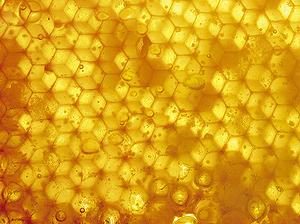 美國華盛頓大學研究解開了蜂群消失之謎:「蜂群衰竭失調」的兩大元兇除了農藥,還有一種是依附寄生在老蜂巢中、微小到用顯微鏡才看得見的病原體。這些因素在過去三年中造成美國和歐洲大量蜂巢蜂去巢空的現象。
美國華盛頓大學研究解開了蜂群消失之謎:「蜂群衰竭失調」的兩大元兇除了農藥,還有一種是依附寄生在老蜂巢中、微小到用顯微鏡才看得見的病原體。這些因素在過去三年中造成美國和歐洲大量蜂巢蜂去巢空的現象。
這項由昆蟲學教授謝波德(Steve Sheppard)與其團隊所進行的研究計劃,部分經費由各地區的養蜂人和華盛頓州立大學農業研究中心共同贊助。他們的研究結果縮小了引發蜂群衰竭失調原因的範疇。
謝波德表示:「我們第一個研究的就是老蜂巢蜂蠟的農藥含量。」從美國農業部提供的蜂巢中,他發現「相當高濃度的農藥殘留物。」並且住在蜂巢内蜜蜂的「壽命銳減。」
解決這個問題簡易的辦法就是更加頻繁地更換蜂巢,例如在歐洲,養蜂人每3年即將蜂巢汰舊換新一次。
與其他過去困擾蜜蜂的病蟲害不同的是,蜂群衰竭失調並不會讓蜜蜂死於蜂巢内,而是讓蜂巢内留下了幾隻剛羽化的成蜂、一隻女王蜂和足夠的食物。
謝波德的另一項工作,目前由一位研究生斯馬特(Matthew Smart)在進行,其研究重點為找出破壞蜜蜂食物消化能力,稱為「東方蜂微粒子蟲」(Nosema ceranae)的微孢子蟲病病原體對蜂群的影響。
養蜂人也視其為蜂群衰竭失調幕後的「確鑿證據」。
謝波德說:「東方蜂微粒子蟲在美國是最近才有人提起,第一次是在2007年。但它卻已經悄悄在全國各地蔓延開來。」
來自華盛頓州亞基馬市(Yakima)的養蜂人奧爾森(Eric Olson)表示,他對蜂巢注射了超高劑量的抗生素煙曲黴素(fumagillin)。「照理這樣應該完全殲滅了微粒子蟲,或者至少減低其數量, 但結果卻不降反升。」
寶貝蜂蜜(Babe's Honey)董事長、也是加拿大溫哥華島上桑尼治(Saanich)最大的養蜂人皮雀爾(Mark Pitcher)表示:「基本上該病原體就像是讓蜜蜂得了免疫功能失調症,簡直形同感染另一種版本的艾滋病毒一般。」
皮雀爾向「桑尼治報」表示,一旦蜜蜂的免疫系統受到損害,就很容易死於種種意想不到的原因,包括原本用來預防蜂蟹蟎等寄生蟲的化學品。
A microscopic pathogen and pesticides embedded in old honeycombs are two major contributors to the bee disease known as colony collapse disorder, which has wiped out thousands of beehives throughout the United States and Europe over the past three years, new research at Washington State University has confirmed.
Working on the project funded in part by regional beekeepers and WSU's Agricultural Research Center, entomology professor Steve Sheppard and his team have narrowed the list of potential causes for colony collapse disorder.
"One of the first things we looked at was the pesticide levels in the wax of older honeycombs," Sheppard said. Using combs contributed by U.S. Department of Agriculture, Sheppard found "fairly high levels of pesticide residue."
Bees raised in those hives "had significantly reduced longevity," he said.
One easy solution is for beekeepers to change honeycombs more often. In Europe, for example, apiarists change combs every three years.
Unlike other diseases that have plagued bees in the past, colony collapse disorder does not kill bees within the hive. It leaves a hive with a few newly hatched adults, a queen and plenty of food.
Another aspect of Sheppard's work, which is being conducted by graduate student Matthew Smart, focuses on the impact of a microsporidian pathogen known as Nosema ceranae, which attacks bees' ability to process food.
Beekeepers have considered it to be "the smoking gun" behind colony collapse disorder.
"Nosema ceranae was only recently described in the U.S., the first time in 2007," Sheppard said. "But while no one really noticed, it has spread throughout the country."
Beekeeper Eric Olson of Yakima, Washington said he treated a hive with a mega-dose of the antibiotic fumagillin. "That should have cause the Nosema to either disappear or at least go down," he said, "but the levels went up."
"What it basically does is it causes bees to get immune-deficiency disorder. So it's actually causing the bees to almost get a version of HIV," said Mark Pitcher, president of Babe's Honey and the biggest beekeeper in Saanich on Canada's Vancouver Island.
Pitcher told the "Saanich News" that once the bees' immune systems are compromised, they become susceptible to dying from a wide range of causes, including chemicals once used to protect the bees from parasites such as varroa mites.




